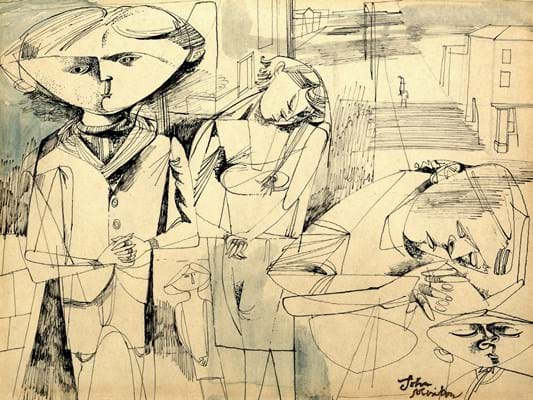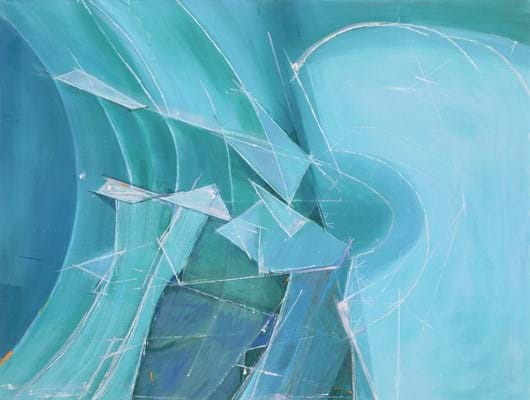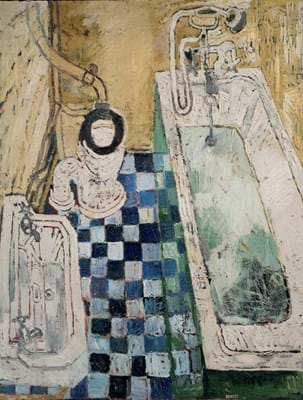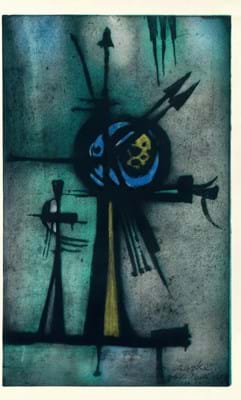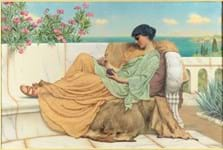Among the top-end offerings is Dame Barbara Hepworth’s Two Forms in Echelon (1961), a bronze sculpture which Cornwall gallery Belgrave St Ives offers for seven figures.
Hepworth, a leading figure in British modernism, created a number of such works which still have an international appeal and regularly appear on the open market.
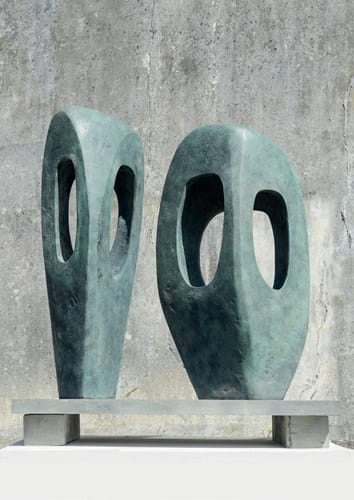
Stand-out piece
Two Forms is likely to be a particularly coveted work. Acquired directly from the artist by the current owners in 1963, this is its first time on the secondary market. One of an edition of seven, other casts are listed at the University of Southampton and Art Gallery of Western Australia, Perth.
This particular example has been publicly displayed in St Ives next to Porthmeor Beach for many years. It now comes to BAF as a stand-out piece.
One of the attractions of the fair – and this collecting field in general – is the breadth of its offerings in terms of price, dates, movement and media.
“ This fair is ideal because it’s about selling but it’s also about education
A glance at some of this year’s other highlights demonstrates the variety. Browse & Darby, for example, offers William Nicholson’s oil on canvas landscape Hot Day, while Askew Art brings a trio of glazed stoneware vessels by Lucie Rie.
A Henry Moore sculpture, Helmet Head 4, is available from Goodman Fine Art, Offer Waterman includes the abstract oil Untitled (Yellow Violet Arc) by William Turnbull, and Dominic Kemp Modern British Prints exhibits one of Allen Jones’ stylised females in Between the Sheets.
“Offering a wide variety is something we do as a gallery too,” says Michael Gaca of Belgrave St Ives. “We go from the low hundreds of pounds, especially with graphic works, right up to pieces like the Hepworth.”
The spread of the market makes it ideal for collectors. “People start off at a low level and as time goes on they increase their spending ability and get into paying higher sums of money,” Gaca says. “This fair is ideal because it’s about selling but it’s also about education, and visitors can get a lot of experience in a short space of time.”
Learning in this instance comes not only from visiting the various dealers’ stands, but also the three specially organised exhibitions within the fair.
One, mounted by dealer Jonathan Clark, brings together 25 works that span the career of Ivon Hitchens. Another, organised by Piano Nobile, features the works of Anthony Caro and his friend John Golding, the writer and critic.
Finally, the fair supports the Paintings in Hospitals charity and its third exhibition features the works of Bridget Riley, who often created works to decorate wards. The two latter shows include works for sale as well as on loan.
Refreshing view
For organiser Robert Sandelson, who bought the fair (formerly the 20/21 British Art Fair run by Gay Hutson and the late Bunny Wynn) with his brother Johnny earlier this year, the new venue could help refresh the view of British art as a whole. With the various changes to the event he hopes to give old art a new look.
“We’re presenting art that people are familiar with on the whole in a different way,” says Sandelson. “We have asked exhibitors to step up and present a big case for British art. There has been a maturing interest in this field over the past decade, more international interest, and there is no reason why modern British art can’t be generally as expensive as modern Italian art, for example.”
Could this single event have a significant impact on public perception? The fair is certainly regarded as instrumental in the rise of the art it represents.
Regular exhibitor Freya Mitton, who specialises in 20th century British art, says it is “absolutely central”. She adds: “When I left Sotheby’s and started out as a dealer it was the one fair I wanted to do, the one I wouldn’t miss. When it started, British art was being undervalued. There was nothing specific for it, but the fair has proven the demand now with its longevity.”
It is still, she adds, “a small world. There are some recognisable key figures such as Hepworth and Nicholson but there are also the artists that don’t have international renown even though they are very well known in this country.”
But increasing interest from a widening geographic group is another change the fair seeks to make. Several international galleries are making the journey to visit the fair and, if all goes well, Sandelson hopes to have these overseas dealers in British art join in future editions.


